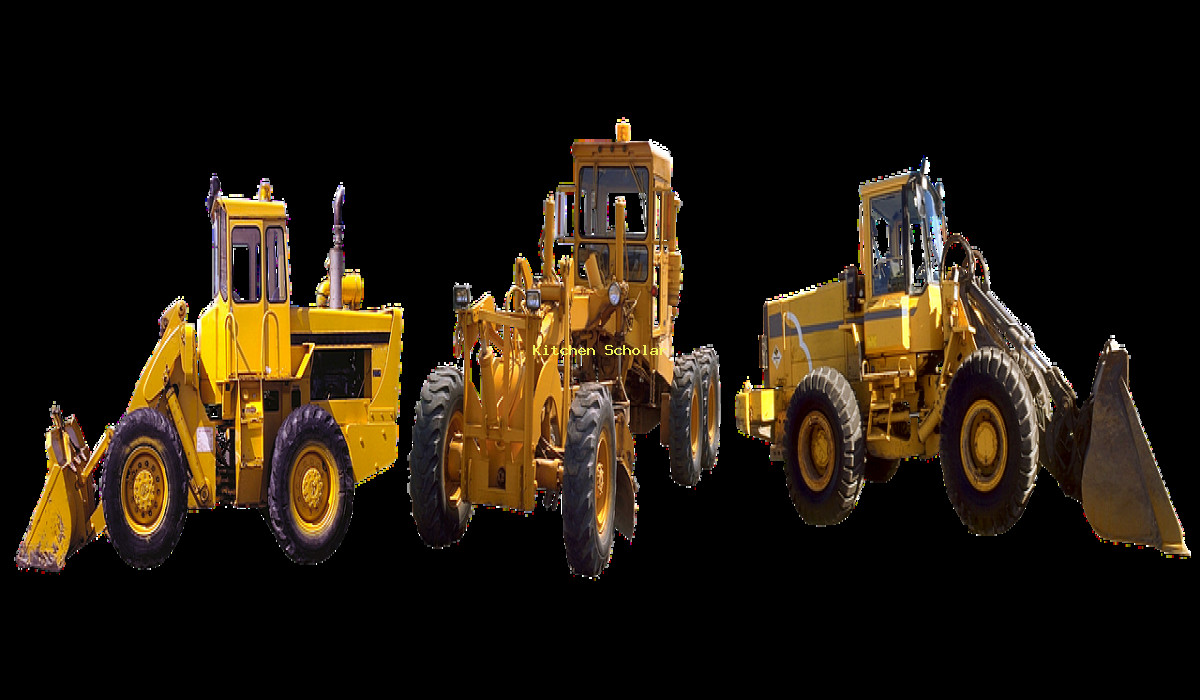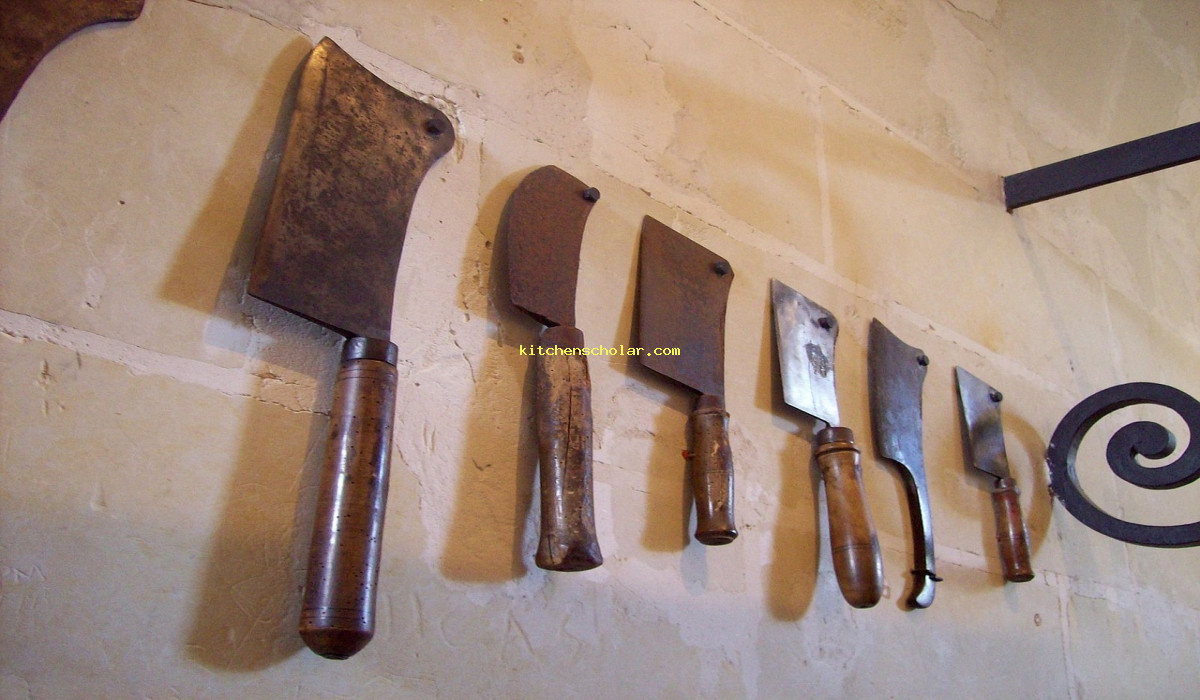10 Essential Kitchen Knives for Every Home Cook. Upgrade your kitchen game with the perfect set of kitchen knives. From slicing and dicing to chopping and mincing, these essential tools are a must-have for any home cook. Discover the best options for every budget and level of expertise. Say goodbye to dull and ineffective knives and hello to effortless meal prep. Explore our top picks for the ultimate kitchen knife experience. Now that’s slicing and dicing, made easy.
10 Essential Kitchen Knives for Every Home Cook
10 Essential Kitchen Knives for Every Home Cook. for every budget 10 Essential Kitchen Knives for Every Home Cook
Kitchen Knives: The Essential Guide for Every Home Cook
If you’re a fan of cooking or simply spend a lot of time in the kitchen, then you know the importance of having a good set of kitchen knives. From chopping vegetables to slicing meat and everything in between, kitchen knives are an essential tool for every home cook. However, with so many different options in the market, it can be overwhelming to choose the right set for your needs. That’s why we’ve created this in-depth guide to help you understand everything there is to know about kitchen knives. So let’s jump right in 10 Essential Kitchen Knives for Every Home Coo!
The Anatomy of a Kitchen Knife
Before we dive into the different types of kitchen knives, it’s essential to understand the basic anatomy of a knife. This knowledge will not only help you make a more informed decision when purchasing a knife but will also assist you in using it correctly. Here are the main parts of a kitchen knife:
– Blade: This is the most critical part of the knife and is used for cutting, slicing, and dicing.
– Tang: The tang is the part of the blade that extends into the handle and provides balance and stability to the knife.
– Handle: The handle is where you grip the knife, and it should feel comfortable and secure in your hand.
– Bolster: The bolster is the thick part of the knife between the blade and the handle, adding weight and balance to the knife.
– Heel: The heel is the rear part of the blade and is used for tasks that require more force.
– Spine: The spine is the top edge of the blade and provides rigidity to the knife.
– Edge: The edge is the sharpened part of the blade and comes in different shapes and angles depending on the type of knife.
Types of Kitchen Knives
Now that you understand the different parts of a kitchen knife, it’s time to explore the various types of knives available and their uses.

Chef’s Knife
The chef’s knife is arguably the most important knife in your kitchen. It’s a versatile all-purpose knife with a broad blade and a curved edge, making it ideal for chopping, slicing, and dicing 10 Essential Kitchen Knives for Every Home Coo. The length of a chef’s knife can vary from 6 to 12 inches, but an 8-inch knife is the most popular.
Santoku Knife
Similar to a chef’s knife, the Santoku knife is also a versatile all-purpose knife, but it originates from Japan. It has a straight edge and a narrow blade with a slightly upward curve at the tip 10 Essential Kitchen Knives for Every Home Coo. The Santoku knife is perfect for precise slicing and dicing and is a popular choice for preparing sushi and sashimi.
Bread Knife
As the name suggests, a bread knife is used for slicing bread. It has a long, serrated blade that allows for smooth cuts without crushing the bread. This type of knife is also useful for slicing cake and other baked goods.
Paring Knife
The paring knife is a small knife with a short blade, usually 3-4 inches long. It’s used for tasks that require more precision, such as peeling fruits and vegetables, deveining shrimps, and removing seeds. It’s an excellent addition to your knife collection for intricate tasks that the larger knives can’t handle.
Boning Knife
A boning knife has a narrow, sharp blade designed specifically for boning and filleting meat and fish. The blade is usually 5 to 6 inches long and has a pointed tip to help maneuver around joints and bones. A boning knife is a must-have for any home cook who prepares meat regularly.
Cleaver Knife
The cleaver knife is a heavy-duty knife with a broad, rectangular blade and a sharp edge. It’s designed for tasks that require more force, such as cutting through bones or crushing garlic cloves. The cleaver knife is often used in Chinese cooking and is also useful for chopping large vegetables.
Steak knife
The steak knife is a smaller version of a chef’s knife, with a sharp pointed edge and a serrated blade. As the name suggests, it’s used for cutting steak and other meats at the table. It’s a standard addition to any cutlery set.
Bird’s Beak Knife
The bird’s beak knife has a curved, pointed tip resembling the beak of a bird. It’s used for peeling and carving fruits and vegetables with curved surfaces and is also handy for decorative cuts.
Cheese Knife
The cheese knife has a serrated or perforated blade designed specifically for cutting through different types of cheese. It’s essential to have a dedicated knife for cheese to avoid mixing flavors.
Bread Knife
As the name suggests, a bread knife is used for slicing bread. It has a long, serrated blade that allows for smooth cuts without crushing the bread. This type of knife is also useful for slicing cake and other baked goods.
Utility Knife
The utility knife is a smaller version of a chef’s knife, with a narrow blade and a sharp edge. It’s used for various tasks in the kitchen, such as cutting fruits and vegetables, carving meat, and more.
Slicer Knife
The slicer knife has a long, thin blade with a rounded end, and it’s used for carving and slicing large pieces of meat or fish. It’s the perfect knife for Sunday roasts and holiday dinners.
Fillet Knife
The fillet knife is similar to a boning knife, with a flexible, thin blade used for filleting and skinning fish. It’s also handy for slicing meats into thin strips.
Nakiri Knife
The Nakiri knife is a Japanese-style knife designed for precision slicing and dicing vegetables. It has a straight edge and a rectangular, thin blade, making it the perfect knife for creating even cuts.
Kitchen Shears
Although not technically a knife, kitchen shears are an essential tool in any kitchen. They have sharp blades for cutting tasks and can also be used for opening packaging and trimming herbs.
Choosing the Right Knife for Your Needs
Now that you know about the different types of kitchen knives, it’s essential to understand how to choose the right one for your needs. Here are some factors to consider when purchasing a knife:
– Purpose: Consider what tasks you will be using the knife for. If you’re a meat lover, investing in a good boning knife or fillet knife is crucial. If you primarily cook vegetables, a Nakiri knife or Santoku knife might be a better choice.
– Comfort: The handle of a knife is just as important as the blade. Ensure it feels comfortable and secure in your hand, especially if you spend a lot of time in the kitchen.
– Budget: Quality kitchen knives can be a significant investment, and it’s essential to consider your budget before making a purchase. However, keep in mind that a good quality knife can last a lifetime if properly cared for.
– Maintenance: Consider the maintenance required for the knife you choose. Some knives require sharpening more often than others, and some can’t be machine washed. Make sure you’re aware of the maintenance requirements before making your purchase.
Caring for Your Kitchen Knives
To ensure your knives last a lifetime and perform at their best, it’s crucial to take care of them properly. Here are some tips for caring for your kitchen knives:
– Hand wash your knives: Never put your knives in the dishwasher, as the heat and harsh detergents can damage the blades.
– Dry them immediately: After washing your knives, make sure to dry them off immediately to prevent any rust from forming.
– Use a cutting board: Always use a cutting board when using your knives to avoid damaging the blade on hard surfaces.
– Store them correctly: Avoid storing your knives in a jumbled drawer, as they can easily get damaged. Use a knife block, magnetic strip, or blade guards to store them safely.
– Sharpen regularly: Keep your knives sharp by regularly honing and sharpening them. A dull knife can be dangerous and cause accidents in the kitchen.
Final Thoughts
A good set of kitchen knives is an essential tool for any home cook. From helping you prepare delicious meals to making your life in the kitchen more comfortable, investing in quality knives is a must. With this guide 10 Essential Kitchen Knives for Every Home Coo, we hope you now have a better understanding of the different types of kitchen knives and how to choose the right one for your needs. Happy cooking!
10 Essential Kitchen Knives for Every Home Cook
Upgrade your kitchen game with the perfect set of kitchen knives. From slicing and dicing to chopping and mincing, these essential tools are a must-have for any home cook. Discover the best options for every budget and level of expertise. Say goodbye to dull and ineffective knives and hello to effortless meal prep. Explore our top picks for the ultimate kitchen knife experience. Now that’s slicing and dicing, made easy.. Kitchen Knives
Knives 10 Essential Kitchen Knives for Every Home Cook
Kitchen Knife Buyers Guide: How To Choose The Best Knife Set For You
10 Essential Kitchen Knives for Every Home Cook Kitchen Knife Buyers Guide: How To Choose The Best Knife Set For You Video 10 Essential Kitchen Knives for Every Home Cook
The Ultimate Guide to Kitchen Knives
When it comes to preparing meals in the kitchen, having the right tools is essential. And one tool that every chef, home cook, or aspiring cook must have is a good set of kitchen knives. With so many options out there 10 Essential Kitchen Knives for Every Home Coo, it can be overwhelming to choose which one is the best for your needs. In this blog post, we will cover everything you need to know about kitchen knives, from the different types available to proper care and maintenance. So let’s dive in and find the perfect knives for your cooking adventures!
History of Kitchen Knives
The origins of kitchen knives can be traced back to the Stone Age, where early humans used sharpened rocks as cutting tools to prepare food. As civilization progressed, metal blades emerged, and the first kitchen knives were created. These knives were primarily made from copper, bronze, and iron. However 10 Essential Kitchen Knives for Every Home Coo, it wasn’t until the 18th century that kitchen knives became mass-produced, thanks to advancements in metal casting and forging techniques.
Types of Kitchen Knives
With kitchen knives being an essential tool in any kitchen, it’s crucial to understand the different types available. Each type has its unique features and uses, making them suitable for specific tasks. Here are some of the most common types of kitchen knives:
1. Chef’s Knife
A versatile knife that is perfect for everyday use, the chef’s knife is a must-have in any kitchen. Its blade is usually 8-12 inches in length and has a slight curve, allowing for a rocking motion while cutting. The chef’s knife can handle a variety of tasks, from chopping and slicing vegetables to cutting through meat and more 10 Essential Kitchen Knives for Every Home Coo.
Benefits:
– Versatile and can perform various cutting tasks
– Has a comfortable grip for ease of use
– Suitable for beginners and professional chefs
2. Paring Knife
As the name suggests, a paring knife is used for precise cutting and peeling tasks 10 Essential Kitchen Knives for Every Home Coo. Its blade is usually 3-4 inches long and has a pointed tip, making it ideal for detailed work. Paring knives come in handy when working with small fruits and vegetables, such as strawberries, grapes, or garlic.
Benefits:
– Perfect for precise cutting and peeling tasks
– Compact size makes it ideal for smaller hands
– Can handle delicate tasks with ease
3. Serrated Knife
A serrated knife has a saw-like edge that makes it perfect for cutting through items with a hard exterior and soft interior, such as bread, tomatoes, or citrus fruits. Its blade is usually 5-7 inches long and has small, jagged teeth that grip onto the food for easier cutting.
Benefits:
– Can cut through hard exteriors without crushing the soft interior
– Ideal for slicing bread and other baked goods
– Perfect for cutting through tough-skinned fruits and vegetables
4. Boning Knife
Designed for removing bones from fish, meat, and poultry, a boning knife is a must-have for any chef who works with animal proteins regularly. Its blade is usually 5-6 inches long and has a sharp, narrow tip that allows for precise cutting around bones.

Benefits:
– Ideal for removing bones from meat and poultry
– Thin and flexible blade allows for precise cuts
– Can be used for filleting fish
5. Santoku Knife
Originating from Japan, the Santoku knife is a versatile tool that has gained popularity in recent years. Its blade is usually 5-7 inches long and has a straight edge, making it perfect for chopping, slicing, and dicing. This knife is often compared to the chef’s knife, but it has a thinner blade, making it lighter and more agile.
Benefits:
– Versatile and can perform various cutting tasks
– Lightweight and easy to maneuver
– Ideal for those with small hands
6. Cleaver
A cleaver is a large, heavy knife that is used for chopping through bones and tough cuts of meat. Its blade is usually 6-8 inches long and has a broad, rectangular design 10 Essential Kitchen Knives for Every Home Coo. This knife is commonly used in Asian cuisine for preparing meat and vegetables.
Benefits:
– Ideal for cutting through bones and tough cuts of meat
– Can be used as a hammer to crush ingredients such as garlic
– Perfect for preparing large quantities of food
7. Utility Knife
A utility knife is a smaller version of a chef’s knife, with a blade that is usually 4-7 inches long. It is a versatile knife that is suitable for smaller cutting tasks, such as slicing and trimming.
Benefits:
– Versatile and can handle a variety of cutting tasks
– Compact size makes it easy to handle
– Ideal for those with smaller hands
8. Carving Knife
Perfect for slicing through large cuts of meat, a carving knife has a long, narrow blade that is usually 8-12 inches in length. Its pointed tip allows for precise cuts, making it a go-to for carving roast meats and poultry.
Benefits:
– Ideal for slicing through large cuts of meat
– Can also be used to slice bread or vegetables
– Perfect for presentation of dishes
9. Fillet Knife
Used primarily for removing bones and skin from fish, a fillet knife has a thin, flexible blade that is usually 6-9 inches long. Its shape also makes it ideal for filleting other types of meat and precision cutting.
Benefits:
– Ideal for filleting fish
– Thin and flexible blade for precise cutting
– Can also be used for removing skin from other types of meat
10. Bread Knife
A bread knife’s most defining feature is its serrated blade, which makes it perfect for cutting through crusty bread or soft pastries without crushing them. Its blade is usually 7-10 inches long and has a long, narrow shape.
Benefits:
– Can cut through crusty bread without crushing it
– Ideal for cutting soft pastries
– Versatile and can also be used to slice through melons and pineapples
11. Cheese Knife
A cheese knife is designed for cutting through different types of cheese with ease. Its blade is usually 3-6 inches long and has a sharp edge. The blade may also have a forked tip, making it suitable for serving slices of cheese to guests 10 Essential Kitchen Knives for Every Home Coo.
Benefits:
– Perfect for cutting through cheese without squashing it
– Can double as a cheese serving utensil
– Ideal for cheese lovers
12. Vegetable Peeler
A vegetable peeler is an essential tool for any kitchen, used for peeling vegetables and fruits. It has a narrow, sharp blade that removes thin layers of the skin without wasting the edible portion of the produce.
Benefits:
– Perfect for peeling fruits and vegetables
– Can remove thin layers of skin without wasting edible portions
– Easy to use and operate
13. Kitchen Shears
Kitchen shears are essentially a pair of scissors designed for use in the kitchen. They have a long, sharp blade that can tackle a variety of tasks, from cutting herbs and trimming meats to opening packaging.
Benefits:
– Versatile and can perform various cutting tasks
– Ideal for snipping herbs and vegetables
– Perfect for opening food packaging
14. Mezzaluna
A mezzaluna, meaning “half-moon” in Italian, is a unique type of knife with a curved, single or double blade. It is used for chopping vegetables and herbs, and its rocking motion allows for quick and efficient cutting.
Benefits:
– Ideal for chopping herbs and vegetables
– Efficient and quick to use
– Can also be used for mincing garlic
15. Pizza Cutter
The pizza cutter is a must-have in any kitchen, especially for pizza lovers. Its circular, sharp blade makes it easy to cut through pizza with precision, ensuring equal-sized slices.
Benefits:
– Ideal for cutting through pizza with ease
– Perfect for slicing through other flatbreads
– Can also be used to cut up quesadillas and other dishes
Care and Maintenance of Kitchen Knives
Now that you know about the different types of kitchen knives let’s talk about how to take care of them to ensure they last a long time. Here are some essential tips for maintaining your kitchen knives:
– Always wash your knives by hand with warm, soapy water immediately after use.
– Dry them thoroughly to avoid rusting.
– Never put your knives in the dishwasher as the heat and constant friction can damage the blades.
– Store your knives in a knife block or on a magnetic strip to protect the blade and prevent accidents.
– Use a honing steel to maintain the sharpness of your blades. For dull blades, use a sharpening stone or take them to a professional knife sharpener.
– Be mindful of what surface you are cutting on. Hard surfaces, such as granite or glass, can quickly dull your knife.
– Always use the right knife for the task at hand. Using the wrong knife can damage the blade and cause accidents.
With proper care and maintenance, your kitchen knives can last for many years, making them a worthwhile investment.
10 Essential Kitchen Knives for Every Home Coo
Having the right kitchen knives is essential for any cook. From the versatile chef’s knife to the precise paring knife, each type has its unique features and uses. Proper care and maintenance are crucial for ensuring your knives last a long time. By following these tips, you can become a master of your kitchen and tackle all your cutting tasks with ease! 10 Essential Kitchen Knives for Every Home Cook

10 Essential Kitchen Knives for Every Home Cook
How should I store my kitchen knives?
It is best to store your kitchen knives in a knife block or on a magnetic strip to prevent them from getting damaged or dull when they are not in use.
What is the difference between a serrated and non-serrated knife?
Serrated knives have small, jagged teeth along the blade which are ideal for slicing through foods with a tough exterior and a soft interior, such as bread or tomatoes. Non-serrated knives have a smooth edge and are best for cutting through foods with a hard exterior, like meat.
What is the best way to sharpen my kitchen knives?
There are several ways to sharpen knives, such as using a whetstone, honing rod, or an electric knife sharpener. It is important to read the instructions carefully and use proper technique to prevent injury and maintain the integrity of your knife.
How often should I sharpen my kitchen knives?
The frequency of sharpening your kitchen knives will depend on how frequently you use them. But on average, it is recommended to sharpen your knives once every 6-12 months to maintain its sharpness.
What is the purpose of a utility knife?
A utility knife is a multi-purpose knife that is smaller than a chef’s knife but larger than a paring knife. It can be used for a variety of tasks such as slicing, chopping, and peeling.
What is the best type of handle for a kitchen knife?
The best type of handle for a kitchen knife is subjective and varies from person to person. Some popular options include wooden, plastic, and rubber handles. It is important to choose a handle that feels comfortable and secure in your hand.
How do I properly sharpen a serrated knife?
To sharpen a serrated knife, it is best to gently run a tapered rod along the teeth of the blade. This will help to realign any bent or damaged serrated edges and keep the knife sharp.
Can I put my kitchen knives in the dishwasher?
It is not recommended to put your kitchen knives in the dishwasher as the high heat and harsh detergents can cause damage to the blade and handle. It is best to hand wash your knives with warm, soapy water and dry them immediately after.
What is the difference between a chef’s knife and a santoku knife?
While both knives are used for similar tasks such as chopping and mincing, the main difference is in the shape of the blade. A chef’s knife has a curved blade with a pointed tip, while a santoku knife has a straight edge with a rounded, blunt tip. They each have their own benefits and it is up to personal preference to choose which one to use. 10 Essential Kitchen Knives for Every Home Cook
